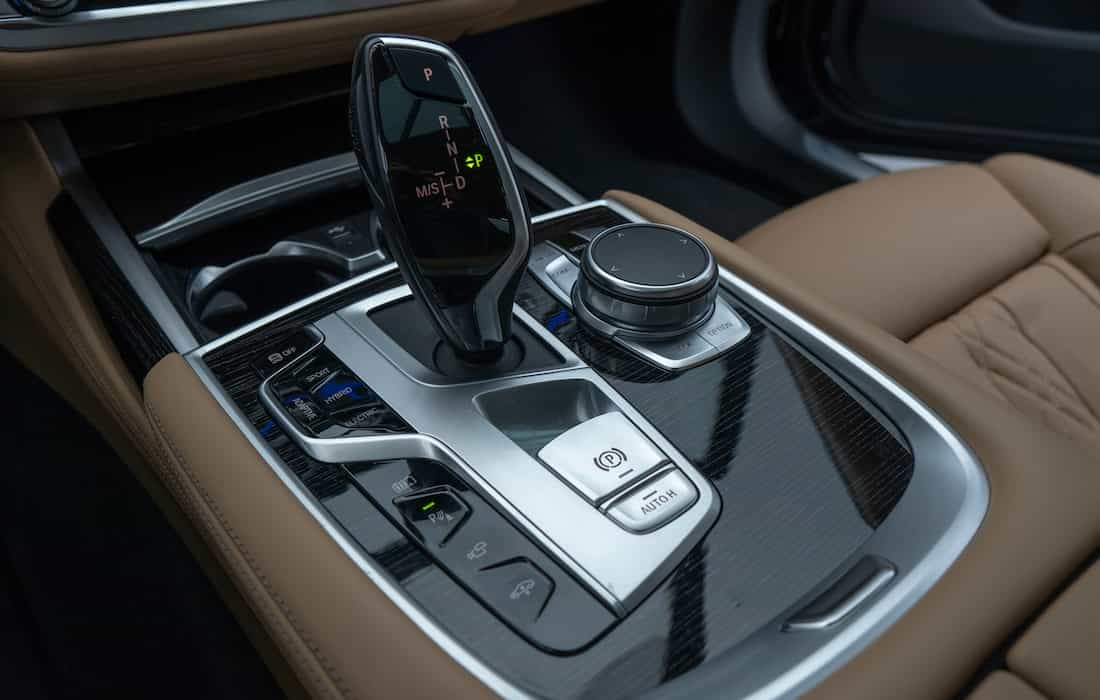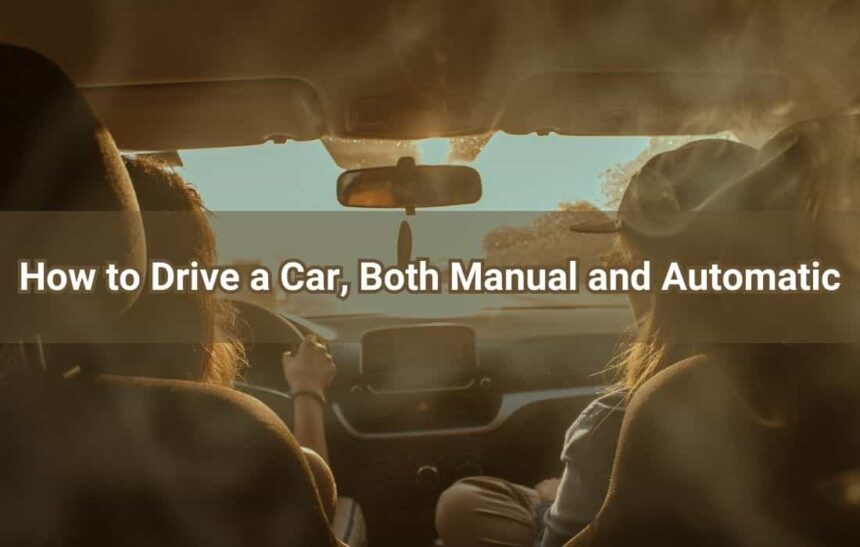Congratulations on reaching 18 and becoming eligible to drive! With the open road calling your name, it’s time to learn how to drive a car. Don’t worry if you’re a beginner; driving isn’t as complicated as it may seem. Learning how to drive a car can be an enjoyable experience, but it requires skill and knowledge to ensure that you and others are safe on the road.
Before getting behind the wheel, make sure that you have obtained the necessary documents, including a driver’s license, and registration Once you have obtained these documents, it is time to learn how to drive a car.
All you need is a bit of comprehension and practice. We have outlined some fundamental guidelines on how to drive a car, including both manual and automatic transmissions below to assist you on your journey.
Manual Transmission

There are different types of manual gearboxes, also known as manual transmissions, commonly used in automobiles. Some of the most common types include:
- Constant mesh gearbox: This is the most common type of manual gearbox used in cars. In this type of gearbox, all gears are in constant mesh with each other, meaning they are always in contact. The driver selects the desired gear by moving a selector fork, which engages the appropriate gear.
- Synchromesh gearbox: This type of gearbox uses synchromesh devices, which help to synchronize the speeds of the gears before they are engaged. This makes it easier and smoother for the driver to shift gears and reduces wear on the transmission.
- Dog-clutch gearbox: In this type of gearbox, the gears are engaged by sliding them along the main shaft, rather than using a selector fork. The gears have teeth, or “dogs,” which engage with slots in the main shaft to lock them in place.
- Sequential gearbox: This type of gearbox is commonly used in racing cars, where quick and precise gear changes are required. The gears are arranged in a sequence, and the driver selects the next gear by pushing or pulling a lever, without the need for a clutch pedal.
- Automated manual gearbox: Also known as a semi-automatic gearbox, this type of transmission combines elements of both manual and automatic gearboxes. The driver can shift gears manually using a paddle shift or a gear lever, but the clutch is controlled automatically.
- Dual-clutch gearbox: This type of gearbox uses two separate clutches, one for odd-numbered gears and one for even-numbered gears. This allows for faster gear changes, as the next gear can be pre-selected and engaged almost instantly.
Each type of manual transmission has its advantages and disadvantages, depending on the application and vehicle.
How To Drive a Manual Transmission
Driving a manual transmission, also known as a stick shift, can be a fun and engaging experience. Here are the steps to follow to drive a manual transmission car:
Step 1: Adjust your seat and mirrors
Before starting the car, adjust your seat and mirrors to ensure that you have a clear view of the road and the car’s surroundings.
Step 2: Familiarize yourself with the pedals
The pedals in a manual transmission car include the clutch, brake, and accelerator. The clutch is located on the left side, and the brake and accelerator are on the right side. Practice pushing and releasing the clutch pedal with your left foot.
Step 3: Start the car
Insert the key into the ignition and turn it to start the car.
Step 4: Depress the clutch pedal
Press the clutch pedal down to the floor with your left foot. This will disengage the engine from the transmission.
Step 5: Shift to first gear
With the clutch pedal still down, shift the car into first gear by moving the gear shifter to the left and up.
Step 6: Gradually release the clutch pedal
Gradually release the clutch pedal while pressing down on the accelerator with your right foot. This will engage the engine with the transmission and start the car moving. You will feel the car start to move forward, and you may need to give it some gas to prevent stalling.
Step 7: Shift to higher gears
As you increase speed, shift to higher gears by pressing the clutch pedal and moving the gear shifter to the next gear. Repeat this until you reach your desired speed.
Step 8: Braking and stopping
To brake, press the brake pedal with your right foot. To come to a complete stop, depress the clutch pedal and shift the car into neutral.
Tips for Driving a Manual Transmission
- Practice, practice, practice. Shifting gears can take time to master.
- Use the clutch pedal to shift gears smoothly. Depress the clutch pedal fully before shifting gears to prevent grinding or damage to the transmission.
- Pay attention to the engine’s RPMs (revolutions per minute) to determine when to shift gears. Shift to a higher gear when the RPMs are too high.
- Be patient. It takes time to learn how to drive a manual transmission, so don’t get discouraged if you stall or make mistakes.
Remember that driving a manual transmission can be a rewarding experience, but it requires practice and patience to become proficient.
Automatic Transmission

In the world of automobiles, there exist various types of automatic transmissions, also referred to as automatic gearboxes. Among the most widely-used types are:
- Traditional automatic transmission: This is the most common type of automatic gearbox used in cars. In this type of gearbox, the driver simply selects the desired gear (drive, park, reverse, etc.) and the transmission automatically shifts gears as needed based on the vehicle speed and throttle position.
- Continuously variable transmission (CVT): This type of gearbox uses a system of pulleys and belts to provide an infinite number of gear ratios, rather than a fixed number of gears. This can improve fuel efficiency, but some drivers find the lack of traditional gear shifts to be less engaging.
- Dual-clutch automatic transmission: This type of gearbox is similar to the dual-clutch manual gearbox but with an automated clutch system. It uses two separate clutches, one for odd-numbered gears and one for even-numbered gears, and can shift gears almost instantly.
- Automated manual transmission: Also known as a clutchless manual transmission, this type of gearbox combines elements of both manual and automatic transmissions. The driver can shift gears manually using paddle shifters or a gear lever, but the clutch is controlled automatically.
- Tiptronic transmission: This type of gearbox allows the driver to shift gears manually using paddle shifters or a gear lever, but can also operate in automatic mode. It can be a good compromise for drivers who want some control over gear selection without the hassle of a traditional manual gearbox.
- Direct shift gearbox (DSG): This type of gearbox is similar to the dual-clutch automatic transmission, but with a different design that allows for even faster gear changes. It is commonly used in high-performance vehicles.
Each type of automatic transmission has its advantages and disadvantages, depending on the application and vehicle.
How To Drive an Automatic Transmission
Driving an automatic transmission car is generally simpler than driving a manual transmission car. Here are the basic steps to follow:
- Adjust your seat and mirrors: Before starting the car, make sure you are sitting in a comfortable position and can easily reach the pedals and steering wheel. Adjust your mirrors to ensure good visibility.
- Start the car: Put your foot on the brake pedal and turn the key or push the start button to start the car.
Select “Drive”: With your foot still on the brake pedal, move the gear selector from “park” to “drive.” Some cars may have additional gears such as “neutral” or “reverse.” Make sure you are in the correct gear before moving the car. - Release the brake pedal: Slowly release the brake pedal and the car will start to move forward. You do not need to press the accelerator pedal unless you want to go faster.
- Accelerate and brake: To speed up, press the accelerator pedal with your foot. To slow down or stop, gently press the brake pedal with your foot.
- Use the gear selector: Most automatic transmissions will shift gears automatically, but you can also manually shift gears using the gear selector if you need more control over the car’s speed.
- Park the car: When you have finished driving, put the car into “park” by moving the gear selector to the “P” position. This will prevent the car from rolling and lock the transmission in place.
Tips for Driving an Automatic Transmission
- Familiarize yourself with the car: Before driving a car, take a few minutes to adjust your seat and mirrors, and get familiar with the controls and dashboard displays.
- Use your right foot for the accelerator and brake pedals: In an automatic car, you only need your right foot for the accelerator and brake pedals. Make sure to use your right foot to avoid accidentally pressing both pedals at the same time.
- Use the parking brake: When parking, always use the parking brake in addition to putting the car in “park.” This will help prevent the car from rolling.
- Be aware of your surroundings: Always be aware of your surroundings while driving, and keep a safe following distance from other cars. Be prepared to slow down or stop suddenly if necessary.
Conclusion
Before you start driving a car, there are certain steps you need to take to ensure that you are doing it safely and legally. Firstly, obtain the necessary documents from the relevant agencies to legally drive a car. This may include a driver’s license, registration and insurance. If you are required to take a driving test, do so and obtain a learner’s permit to begin taking driving lessons. It is crucial to comply with these regulations to avoid getting into legal trouble and to guarantee the safety of yourself and others on the road.
After acquiring the required documents, the next step is to learn how to drive a car. Attend driving lessons with a certified instructor and practice until you feel confident in your abilities. During your lessons, familiarize yourself with the car’s controls, including the pedals, gears, and steering wheel. Practice driving in various road conditions, such as on highways or in heavy traffic. Repeat this process as often as needed until you have mastered the skill of driving a car. Keep in mind that driving is a skill that demands practice and patience, so don’t rush the learning process.










